NEW YORK –- The Associated Press revealed Monday that the U.S. government is considering a drone strike to kill an American citizen with alleged terrorist ties.
Several anonymous officials made the case for killing the American without due process and despite restrictions called for last year to carry out drone strikes through the Pentagon, rather than the CIA. The American, the officials claimed, is a member of al Qaeda actively plotting to kill U.S. citizens who is currently in a remote location and has been involved in previous terrorist attacks –- all arguments that bolster the case that a strike should be authorized against an imminent threat.
The AP, however, didn't publish a key detail relevant to the public debate: where this drone strike may take place. The AP acknowledged withholding the country’s name because “officials said publishing it could interrupt ongoing counterterror operations.”
The Washington Post quickly matched the AP’s scoop about the debate, but also didn’t reveal the American’s location. The Post did not acknowledge whether it held back such information at the government's request, so it may be the case the paper didn't have that detail. But the Post did note in the article how “the CIA has carried out hundreds of strikes against the groups in Pakistan," which at least suggested the possibility the American was hiding there.
Despite a similar request to withhold the location, The New York Times reported Monday night that the American terrorist suspect is in Pakistan.
“We take every request from the government seriously, but I worry that their requests to withhold information have become almost blanket policy,” Carolyn Ryan, the Times' Washington bureau chief, told HuffPost in an email.
“In this case, the government has said only generally that publication of the country in which the American is living would interfere with their ongoing counter terror operations,” Ryan continued. “When they made the request to us, we pressed them for more of an explanation, and they never responded. What's more, the Obama Administration has made it very clear that it is going to target anyone in Pakistan who is affiliated with Al Qaeda, so that certainly should come as no surprise to any such person hiding out in Pakistan.”
Ryan added that “when we are describing a debate over killing an American citizen, I think it's important to give readers as much information as possible about the circumstances surrounding that debate.” She also noted that in the case of Anwar al-Awlaki –- a U.S.-born cleric killed in a 2011 drone strike –- the fact that he was located in Yemen was part of the debate.
Shortly after the NYT story ran, The Wall Street Journal also reported the country as Pakistan. A Journal spokeswoman said the paper was “not asked not to publish that information.” CBS News later acknowledged holding the Pakistan news, but decided to include it in its report after the NYT piece ran.
Responsible editors and news executives take government requests to hold information seriously when national security is involved. But on several occasions, news organizations have seemed to allow the government to set the parameters of the debate by agreeing to withhold details without a clear justification and, in some cases, after the details had already been reported or had become widely known.
For instance, the AP briefly reported in September 2012 that two Americans killed in the Benghazi attack were working for the CIA, only to later pull the information from the wire. The New York Times and Washington Post also withheld that information, thereby allowing officials to reveal it two months later on the government's own terms.
In February 2013, the same three news outlets acknowledged withholding the location of a CIA drone base in Saudi Arabia at the government’s request, despite that information having already been published. A few months later, the AP -- and others -- withheld the identity of a "widely known" CIA spy chief whose identity was quickly revealed on Twitter. And this past August, CNN and the Times reported how intercepted al Qaeda communications warning of an attack had prompted embassy closings abroad, while withholding the terrorist leaders’ names on the intercept.
McClatchy published the information, which Washington bureau chief James Asher told HuffPost at the time was “widely known in Yemen.” The government’s request to the Times and CNN came as officials were anonymously leaking information about a possible future al Qaeda attack.
The flurry of leaks over the past 24 hours come on the heels of Rep. Mike Rogers (R-Mich.) claiming last week at a hearing that Obama administration restrictions on drone use have become “self-imposed red tape” to prevent the U.S. from killing terrorists plotting against the U.S. Rogers also made headlines at the same hearing for suggesting that journalists may be committing a crime for reporting on documents leaked by former National Security Agency contractor Edward Snowden.
